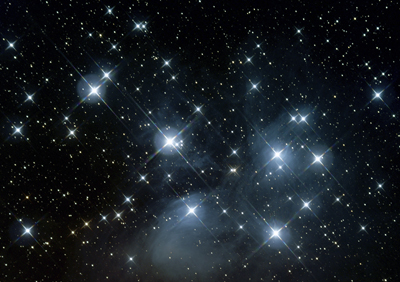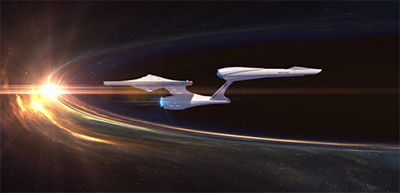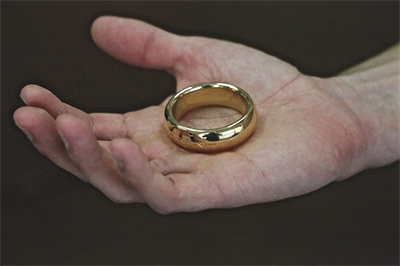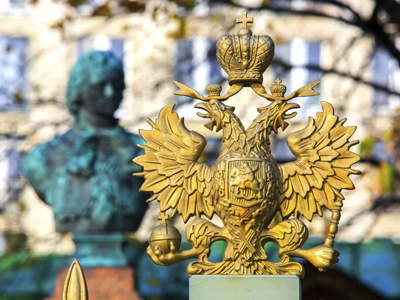
|
I have always been a selfish person. It’s not as if I don’t care for others, extend a hand when it is needed, or give to charity. But my first goal in life has been to protect and defend my own person, my integrity, my … destiny, if you will, and my family. I have always resented the suggestion—sometimes spoken, usually implied—that I did not and should not live for myself but for others. It said that if I was not selfless in spirit and did not pursue the goals of others or of some generalized sense of society, I was not a worthwhile human being.
But I have not exactly lived for my own good times and catered to my lusts and pleasures. Early on, back in high school, I conceived of my life’s purpose as being a writer—that “destiny,” if you will. I was going to capture something mysterious but important, wring it out of random thoughts and thin air, and put it down on paper for all the world to read and understand. What I intended to capture was not going to be some secret of life or instruction for the illuminati, but instead a particular view of humanity, of human possibility, and of personal fulfillment.
To achieve this, I realized that I would have to give up part of my brain to the development and pursuit of stories. I was going to be the prism through which these thoughts and stories entered the world. And novel writing is a full-time activity that extends upon the time a person is actually sitting down and marking a piece of paper or configuring pixels on a computer screen. Plots come out in bits and pieces, and good ideas awaken you in the middle of the night. Characters offer suggestions about what they will and will not do, and they try out bits of dialogue while you are soaping in the shower. As I’ve written elsewhere, the writing life is like renting out your head to a traveling theater company and being constantly nagged by the in-house playwright and the actors about the show in production.1 The only selfish part in all of this is that I have pursued my own visions, my own stories, instead of consciously adopting the purposes and narratives of others or working for some generalized benefit to society.
As I politically matured, sometime in college, I began to see this “selfishness” as a key element in the differences between the Left and the Right. A person’s focus of interest, striving, and goals can be placed along a spectrum: from individual self to family, clan, and tribe—or village, neighborhood, city—or guild, profession, class—and then on to state, region, nation—or party and government. From the closer, more personal, and more tangible, to the wider, more social, and more abstract.
The Right would place a person’s natural emphasis on the closer end of the spectrum: self, family, personal beliefs, individual preferences. This is actually a state of diversity within society. “I like chocolate ice cream.” “I like vanilla.” “I want to work as a plumber.” “I’m going to be a lawyer.” “I choose to drive a Mercedes.” “I like Chevrolets.” “I believe in the Christian god.” “I am an atheist.” And a society, economy, and government fashioned according to the ideals of the Right would allow all of this. So long as the individual does not install faulty plumbing fixtures, cheat clients out of inheritances, rob a bank to buy that Mercedes, or burn crosses in anyone’s yard—go for it. The Right has generally been about individual freedoms, self-determination, and going your own way.
The Left would place a person’s entrance on the wider end of that spectrum: class, state, nation, and lately the globe itself as some simulacrum of all humanity. This is actually a state of uniformity for individuals. “I like whatever foods can be most sustainably produced.” “I will work wherever the government requires my service.” “I will ride the bus and take the train if it relieves pressure on the environment.” “I believe in the principles of my party.” And the society, the economy, and the government would be fashioned to make the best use of this willingness to conform, according to the inspirations of the philosophers, social scientists, and technical experts identified and promoted by the party. (I almost wrote “the state” there, but in the Left’s current paradigm, going back to Mao and Lenin if not to Marx himself, the state is the supreme expression of the party—and not the other way around.) The Left has always been about obedience, subservience, and getting in line.
Is all this a bit too extreme? Perhaps a few decades or even a dozen years ago I would have admitted as much. But in the last couple of years the Left has come out of its populist shell. The Democratic Party has veered into Democratic Socialism, if not into traditional Socialism and even Marxism. I would like to believe that the party had a cooling off and period of reappraisal from its pro-Soviet heyday in the 1920s and ’30s after the failure of the Ukrainian harvests, the Moscow show trials, and the Molotov–Ribbentrop Pact. But perhaps the party leaders simply devised a mask fashioned out of unionism, suburban populism, and later environmentalism to gain support for itself in the shadow of the Cold War.
Of course, at points along this spectrum and in certain societies, the focus of individual intentions has sometimes become confused.
During my college days in the late 1960s, a lot of young leftists were “tuning in, turning on, and dropping out”—if not dropping out of college directly, they were dropping out of the vision of social order and the nominal good that their parents espoused. Some of this turning away from society had to do with the Vietnam War. There, young leftists refused to comply with the state’s demand for more soldiers—not for their own personal reasons, of course, or because they were scared, but presumably in service to a greater humanity that surpassed the dictates of the state of that time.
There has also been some confusion about just how free and open a rightist, free-market, capitalist economy can be. Sure, everyone is free to find his or her own career and own way of making a living. But some of those choices—novel writing for one example, or almost any art form—don’t necessarily pay a living wage. And while the individual is free to like any flavor of ice cream or drive any brand of car he or she desires, the object of desire is not always within economic reach. Indeed, it sometimes seems that the producers of ice cream, cars, and everything else are promoting choices as limited and directed as if they were promoted by a government technical expert. The only difference would be that if a socialist government decided to produce only plum-flavored ice cream as the best, most healthful, and cheapest, then individuals would have no choice but to eat it and forget about chocolate or vanilla. The government could not be wrong in its decision and would not suffer economically. But if a competitor in a capitalist economy decided to promote only plum ice cream and found subscribers willing to fund the venture, they would probably lose their money and go out of business.
The question of emphasis along the spectrum, of self or others, comes down to a basic philosophical view. Does the individual belong to him- or herself or to society as a whole? Does the individual have innate value as an autonomous and conscious being? Or is the individual important only as a cog in a bigger machine, a part of the social whole, a zero stringing out a larger number?
Anyone who knows my writing will know how I answer that question.
1. And so I have always carried a pocket notebook and pen with me—as early as high school—and placed pad and pencil on the nightstand, just to capture these random thoughts. From loose paper, these bits and pieces go into a folder on the hard drive dedicated to the current novel or to one in development. Notes are organized into themes, motifs, characters, plot points, and eventually an outline. And the outline is then translated into a full production draft. The difference between a working writer and everyone else is this system of capture. Everyone gets these random ideas; the writer organizes them toward the work in progress.



